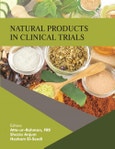The second volume covers the following topics:
- A review of recent patents and natural products in clinical trials to treat schistosomiasis
- Natural products: the new intervention regimen for metabolic disorders
- Fluorine-containing drugs and drug candidates derived from natural products
- Natural products for the management of cardiovascular diseases
- Implication of natural compounds for the prevention of ocular diseases
Table of Contents
Chapter 1 a Review of Recent Patents and Natural Products in Clinical Trial to Treat Schistosomiasis
1. Drugs Discovery and Patented Until 2000
1.1. Antimonials and Piperazine Derivatives
1.2. Imidazolidine Derivatives
1.3. Acridanone Derivatives
1.4. Carbazoles
1.5. Aminoacyl Adenylate Mimics
1.6. Praziquantel, Its Derivatives and Recent Studies
2. Artemisin, Its Derivatives and Recent Studies
3. Recent Patents and Clinical Trial of Synthetic Drugs
3.1. N-Phosphorylated Amino Acid
3.2. Peroxide Derivatives
3.3. Oxadiazole N-Oxide Derivatives
3.4. Trioxolanes
3.5. Cysteine Protease Inhibitors
3.6. Decoquinate Analogues
3.7. Platinum Complexes
3.8. Other Compounds
4. Recent Patents and Clinical Trial of Natural Compounds
4.1. Polyunsaturated Fatty Acids
4.2. Alkaloids
4.3. Natural Oils and Peptides
4.4. Terpenes
4.5. Other Triterpene Derivatives, Diterpenes and Saponins
4.6. Tocopherols, Naphthoquinones and Anthraquinones
- Concluding Remarks and Future Perspectives
- Consent for Publication
- Conflict of Interest
- Acknowledgements
- References
Chapter 2 Natural Products, the New Intervention Regime of Metabolic Disorders
1. Introduction
2. Obesity
2.1. Pathophysiology of Obesity
2.2. Natural Products and Obesity
2.2.1. Natural Products As Appetite Suppressants
2.2.2. Natural Products As Lipase Inhibitors
2.2.3. Natural Products Modulating Adipocyte Differentiation
2.2.4. Natural Products Modulating Lipid Metabolism
2.2.5. Marine Products As Potential Anti-Obesity
3. Diabetes Mellitus
3.1. Pathophysiology of Diabetes Mellitus
3.2. Natural Products and Diabetes Mellitus
3.2.1. Flavonoids
3.2.2. Phenolics
3.2.3. Xanthones
3.2.4. Alkaloids
3.2.5. Triterpenes
3.2.6. Sterols
3.2.7. Sesquiterpenes
3.2.8. Monoterpenes
3.2.9. Essential Oils
3.2.10. Glucosinolates
3.2.11. Carbohydrates
3.2.12. Vitamins
3.2.13. Miscellaneous Compounds
3.2.14. Dietary Fibers
3.2.15. Resin
3.2.16. Herbal Material
3.2.17. Herbal Combination
3.2.18. Non-Herbal Antidiabetic Material
4. Dyslipdemia
4.1. Pathophysiology of Dyslipidemia
4.2. Natural Products and Dyslipidemia
4.2.1. Statins
4.2.2. Flavonoids
4.2.3. Coumarins
4.2.4. Phenolic Derivatives
4.2.5. Tannins
4.2.6. Alkaloids
4.2.7. Fixed Oils
4.2.8. Volatile Oils
4.2.9. Organosulphur Compounds
4.2.10. Saponins
4.2.11. Soy Protein (Glycine Max)
4.2.12. Gums and Dietary Plants Fibers
4.2.13. Carotenoids
4.2.14. Phytosterols
4.2.15. Plant Extracts
5. Osteoporosis
5.1. Pathophysiology of Osteoporosis
5.2. Natural Products and Osteoporosis
5.2.1. Flavonoids and Their Glycosides
5.2.2. Phenolic Derivatives, Phenolic Acids and Their Glycosides
5.2.3. Quinone Derivatives
5.2.4. Lignans
5.2.5. Monoterpenoids
5.2.6. Diterpenoids
5.2.7. Sesquiterpenoids
5.2.8. Triterpenoids
5.2.9. Tetraterpenoids
5.2.10. Coumarins
5.2.11. Diary L Heptanoids
5.2.12. Steroids
5.2.13. Marine-Derived Natural Products for Osteoporosis
- Concluding Remarks
- Consent for Publication
- Conflict of Interest
- Acknowledgements
- References
Chapter 3 Fluorine-Containing Drugs and Drug Candidates Derived from Natural Products
1. Introduction
2. Impact of Fluorine
3. Fluorine-Containing Drugs Approved by the Fda That Are Derived from Natural Products
3.1. Fluorinated Steroids
3.2. Fluorinated Nucleosides
3.3. Other Fluorinated Drugs Derived from Natural Products
4. Fluorine-Containing Drug Candidates Derived from Natural Products in Clinical Trials
4.1. Overview
4.2. Antiproliferative Agents
4.3. Antimicrobial Agents
4.4. Anti-Inflammatory Agents
4.5. Miscellaneous
- Conclusions and Perspectives
- Consent for Publication
- Conflict of Interest
- Acknowledgement
- References
Chapter 4 Natural Products for the Management of Cardiovascular Diseases
1. Introduction
2. Ischemic Heart Disease and Congestive Heart Failure
2.1. Pathophysiology of Ischemic Heart Disease
2.2. Pathophysiology of Congestive Heart Failure (Chf)
2.3. Natural Products for Management of Congestive Heart Failure and Ischemic Heart Disease
2.3.1. Flavonoids
2.3.2. Resveratrol
2.3.3. Lycopene
2.3.4. Omega-3 Fatty Acids
2.3.5. Olive Oil
2.3.6. Soy
2.3.7. Cardiac Glycosides
3. Hypertension
3.1. Pathophysiology of Hypertension
3.1.1. Sympathetic Nervous System
3.1.2. Endothelial Function
3.1.3. Renin-Angiotensin-Aldosterone System (Raas):
3.1.4. Obesity
3.1.5. Vascular Smooth Muscles
3.1.6. Reactive Oxygen Species
3.2. Natural Products and Hypertension
3.2.1. Nigella Sativa (Black Cumin, Black Seed)
3.2.2. Beta Vulgaris (Red Beet, Table Beet Or Golden Beet)
3.2.3. Viz Coptis Chinensis (Goldthread)
3.2.4. Hibiscus Sabdariffa L.
3.2.5. Crataegus Monogyna (Hawthorn)
3.2.6. Allium Sativum L. (Garlic)
3.2.7. Crocus Sativus L. (Saffron)
3.2.8. Panax Ginseng (Ginseng)
3.2.9. Camelia Sinensis L. (Tea Plant, Tea Shrub)
3.2.10. Cymbopogon Citratus (Lemongrass)
3.2.10. Peumus Boldus (Family Monimiaceae)
4. Angina Pectoris
4.1. Pathophysiology of Angina Pectoris
4.2. Natural Products and Angina Pectoris
5. Atherosclerosis
5.1. Pathophysiology of Atherosclerosis
5.2. Natural Products and Atherosclerosis
5.2.1. Ginkgetin
5.2.2. Colchicine
5.2.3. Garlic
5.2.4. Anti-Inflammatory Herbs
5.2.5. Phytoestrogen-Rich Herbs
6. Herbal Treatment of Cerebrovascular Disorders
6.1. Physiology and Pathophysiology of Blood Coagulation
6.2. Natural Treatments of Coagulation Abnormalities
6.2.1 Ginkolides and Bilobalides
6.2.2. Sulphated Polysaccharides
6.2.3. Garlic Thiosulphinates
6.2.4. Extract of Antrodia Camphora
6.2.5. Alpha-Lipois Acid
- Concluding Remarks
- Consent for Publication
- Conflict of Interest
- Acknowledgements
- References
Chapter 5 Implication of Natural Compounds for the Prevention of Ocular Diseases
- Introduction
- Major Ocular Disorders
- Age-Related Macular Degeneration
- Glaucoma
- Cataract
- Diabetic Retinopathy
- Natural Compounds Employed in Ocular Disorders
- Polyphenols
- Curcumin
- Quercetin
- Catechin
- Nepetin
- Resveratrol
- Terpenes
- Andrographolide
- Acetyl-11-Keto-B-Boswellic Acid
- Vitamins
- Folic Acid
- Α-Tocopherol
- Methylcobalamin
- Amino Acids and Their Derivatives
- Taurine
- L- Glutathione
- N-Acetyl-L-Cysteine
- Carnitine
- Carotenoids
- Lutein and Zeaxanthin
- Other Phytochemicals
- Omega-3-Fatty Acids
- Α-Lipoic Acid
- Coenzyme Q10
- Citicoline
- Pycnogenol
- Trans-Anethole
- Squalamine
- Chitosan
- Saffron
- Atropine
- Natural Compounds As a Viscoelastic Substance
- Hyaluronic Acid
- Hydroxypropyl Methylcellulose
- Chondroitin Sulfate
- Clinical and Preclinical Trials of Natural Compounds
- Ocular Barriers
- Future Prospects
- Conclusion
- Consent for Publication
- Conflict of Interest
- Acknowledgement
- References
- Subject Index
Author
- Atta-ur-Rahman
- Shazia Anjum
- Hesham R. El-Seedi








